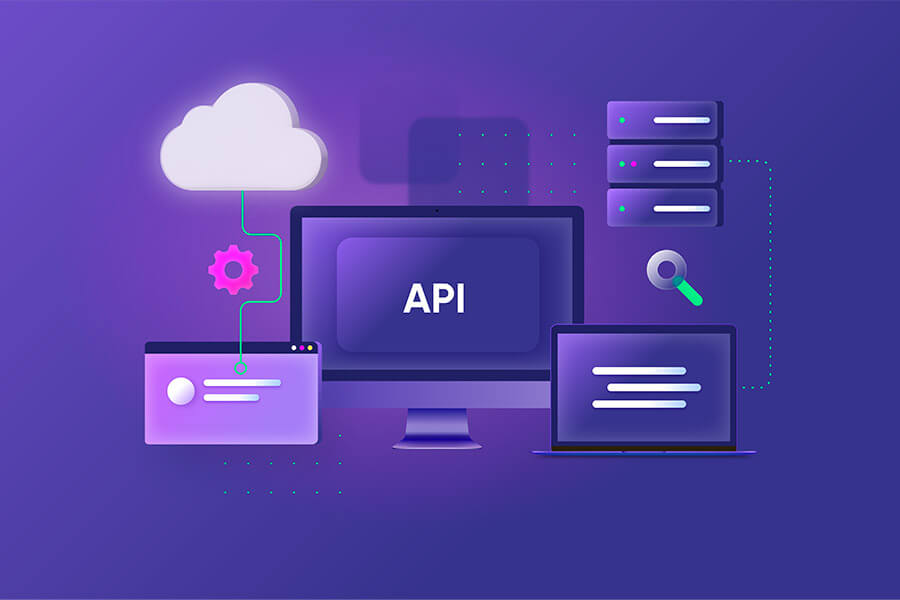Jul. 30, 2025


8 minutes read

Share this article
Effective API integration can significantly boost efficiency and drive revenue growth. As digital transformation accelerates, seamless API connections are becoming essential for staying competitive.
As businesses continue to adopt digital transformation strategies, the importance of seamless API integration cannot be overstated. This article aims to demystify the concept of API integration, providing a comprehensive overview of its cost breakdown, business benefits, and real-world use cases.
By exploring the fundamentals of API integration and its impact on businesses, readers will gain valuable insights into how this technology can drive growth, improve customer experiences, and streamline operations.
API integration refers to the process of connecting different application programming interfaces (APIs) to enable them to communicate with each other seamlessly. This integration allows businesses to leverage the functionalities of various applications, enhancing their overall operational efficiency.
It plays a crucial role in enhancing business efficiency and driving innovation. As businesses strive to stay competitive, they are increasingly relying on them to streamline their operations. By integrating APIs, companies can automate processes, reduce manual errors, and improve data consistency across different platforms.
It is vital for business success as it facilitates the exchange of data between different applications, enabling businesses to make informed decisions. It enhances customer experiences by providing a unified view of customer interactions across various touchpoints.
Moreover, it enables businesses to be more agile, allowing them to respond quickly to changing market conditions and customer needs.
Despite its many benefits it can be a challenging process. Common pain points include ensuring data security, managing complex integrations, and dealing with API version changes.
Businesses often struggle with finding the right talent to handle API integrations, as it requires specialized skills. Additionally, the cost of implementing and maintaining them can be a significant concern for many organizations.
The world of API integration is diverse, with multiple types catering to different business needs. They can be categorized into several types based on their accessibility, functionality, and purpose.
Understanding the various types of API integrations is crucial for businesses to select the most suitable approach for their specific needs. By leveraging the correct kind, companies can enhance their operations, improve the customer experience, and drive innovation.
The integration of APIs has become a crucial aspect of modern business, offering numerous benefits and applications. As companies strive to remain competitive, API integration plays a crucial role in enhancing operational efficiency, driving growth, and improving customer experiences. This process offers a wide range of benefits that can transform the way businesses operate.
Some of the key advantages include:
API integration has numerous real-world applications across various industries. Some examples include:
API integration costs can be broken down into several key areas, including initial development, ongoing maintenance, and scaling expenses. Understanding these costs is crucial for businesses to budget effectively and make informed decisions about their API integration strategies.
The initial development and integration costs are typically the most significant upfront expenses associated with API integration. These costs include the time and resources required to design, develop, and test the API integration. Factors influencing these costs include the complexity of the integration, the technology stack employed, and the development team’s experience.
For instance, integrating a simple API with a straightforward data structure might require fewer resources compared to integrating a complex API with multiple endpoints and data formats.
After the initial integration is complete, ongoing maintenance and scaling expenses become a priority. Maintenance costs include monitoring the API integration for issues, updating the integration to accommodate changes in the API, and ensuring security and compliance.
Scaling expenses are associated with increasing the capacity of the API integration to handle growing traffic or data volumes. This might involve optimizing the integration for better performance or migrating to a more robust infrastructure.
The choice of implementation approach can significantly impact the cost and success of API integration. There are several approaches to consider.
Several businesses have successfully implemented API integrations to enhance their operations and customer experiences. For example, companies like Amazon and Uber have leveraged APIs to integrate third-party services, expand their offerings, and improve customer engagement.
These examples demonstrate the potential of API integration to drive business innovation and growth, highlighting the importance of choosing the right implementation approach and managing costs effectively.
As businesses continue to rely on API integration to drive growth and innovation, it’s essential to adopt best practices that ensure scalability and flexibility. By understanding the various types of API integration, businesses can select the most suitable approach for their needs, utilizing public, internal, composite, or partner APIs to achieve their objectives.
The future of API integration looks promising, with emerging trends and technologies set to shape the industry. As companies like Amazon and Salesforce continue to push the boundaries of API integration, we can expect to see increased adoption of microservices architecture and greater emphasis on API security and management.
To stay ahead of the curve, businesses must prioritize flexibility and scalability in their API integration strategies, ensuring that their systems can adapt to changing market conditions and evolving customer needs. By doing so, they can unlock the full potential of API integration and drive long-term success.

As Head of Service Delivery, Corina is known for her unwavering commitment to excellence. She holds an engineering degree in Systems Engineering and a master’s degree in Organizational Management. She is also a university professor of Information Systems Planning.

As Head of Service Delivery, Corina is known for her unwavering commitment to excellence. She holds an engineering degree in Systems Engineering and a master’s degree in Organizational Management. She is also a university professor of Information Systems Planning.
Accelerate your software development with our on-demand nearshore engineering teams.